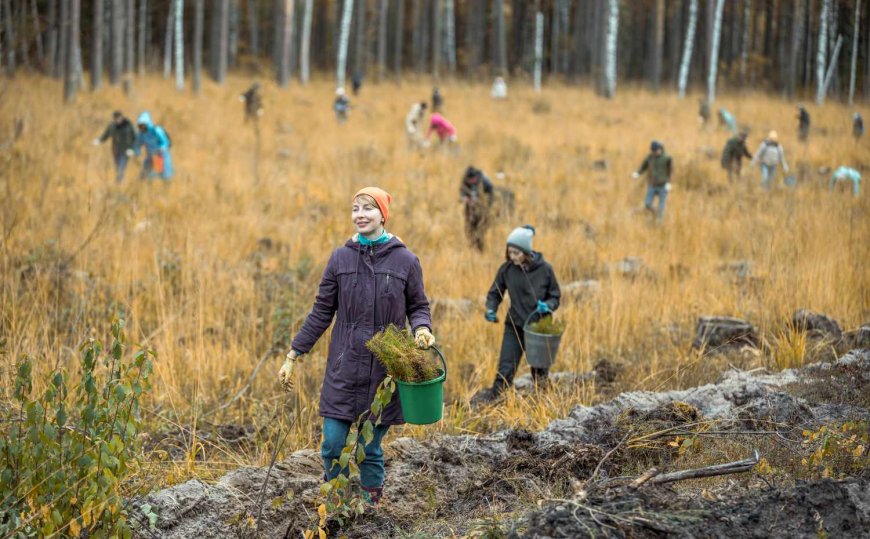Regenerative Travel: The Future of Tourism That Gives Back to the Planet
Regenerative travel is the future of tourism, going beyond sustainability to restore nature and empower communities. Discover how to travel responsibly.

Imagine traveling to breathtaking destinations, not just to admire their beauty but to actively restore and improve them. What if your vacation could help rebuild coral reefs, regenerate forests, and empower local communities?
Welcome to the world of Regenerative Travel—a movement that goes beyond sustainable tourism by ensuring that travel leaves a place better than it was before. Unlike traditional tourism, which often exploits destinations, regenerative travel revitalizes ecosystems, cultures, and economies.
As climate change, overtourism, and environmental degradation threaten our world’s most stunning locations, travelers are seeking a new way to explore responsibly. So, how does regenerative travel work, and how can you be part of it? Let’s dive in.
What Is Regenerative Travel?
Regenerative travel is an evolution of sustainable tourism, but with a key difference: it doesn’t just minimize harm—it actively restores and improves destinations.
- Sustainable travel: Aims to reduce negative impacts (e.g., using less plastic, reducing carbon footprints).
- Regenerative travel: Goes beyond sustainability by restoring nature, supporting communities, and improving biodiversity.
Instead of just preserving what’s already there, regenerative tourism helps places heal and thrive.
Why Sustainable Tourism Is No Longer Enough
For years, “sustainable tourism” was the gold standard. It focused on reducing waste, conserving resources, and minimizing tourism’s negative effects. But with climate change, habitat destruction, and mass tourism damaging ecosystems, “doing less harm” is no longer enough.
The Problems With Traditional Tourism
❌ Overtourism: Popular destinations like Venice, Bali, and Machu Picchu are being overwhelmed by visitors, causing environmental damage and cultural dilution.
❌ Carbon Emissions: The tourism industry contributes 8% of global carbon emissions, with flights being a major culprit.
❌ Ecosystem Destruction: Resorts, cruise ships, and mass tourism often lead to deforestation, coral reef bleaching, and habitat loss.
❌ Economic Imbalance: In many tourist hotspots, local communities receive little benefit, while large corporations take most of the profits.
Regenerative travel is the antidote, ensuring that tourism gives more than it takes.
How Regenerative Travel Works: The Key Principles
Regenerative travel isn’t just a buzzword—it’s based on four key principles that travelers and businesses can follow:
1. Restoring Nature & Biodiversity ????
Regenerative travel helps rebuild ecosystems instead of harming them.
✅ Reforestation projects: Some eco-lodges plant a tree for every guest.
✅ Coral reef restoration: Travelers can participate in reef-building programs.
✅ Regenerative agriculture: Farm-to-table resorts use organic, local food to regenerate soil.
???? Example of Traditional Tourism Harm: Mass tourism in the Maldives has led to coral bleaching and destruction of marine life.
✅ Regenerative Alternative: Resorts like Soneva Fushi in the Maldives plant coral gardens to restore marine habitats.
2. Supporting Local Communities & Economies ????
Regenerative travel ensures that money stays in the local economy and supports indigenous cultures.
✅ Locally owned hotels & homestays instead of big international chains.
✅ Hiring locals in tourism jobs rather than bringing in outside workers.
✅ Authentic cultural experiences led by indigenous guides and artisans.
???? Example of Traditional Tourism Harm: All-inclusive resorts in the Caribbean often exploit workers and send profits overseas.
✅ Regenerative Alternative: Resorts like Nihi Sumba (Indonesia) reinvest profits into the local community, funding schools and clean water projects.
3. Low-Impact & Regenerative Travel Experiences ????♂️
Instead of high-impact mass tourism, regenerative travelers choose low-impact, meaningful experiences.
✅ Slow travel: Spending more time in fewer places reduces carbon footprints.
✅ Eco-tourism adventures: Wildlife safaris, hiking, and kayaking with strict conservation policies.
✅ Voluntourism: Travelers participate in restoration projects (e.g., cleaning beaches, planting trees).
???? Example of Traditional Tourism Harm: Safari tourism in Africa often disrupts animal habitats.
✅ Regenerative Alternative: Regenerative safaris (like those offered by Singita Lodges) reinvest profits into wildlife conservation.
4. Reducing Carbon Footprints & Travel Impact ????
Regenerative travel minimizes environmental damage while actively helping the planet.
✅ Carbon-neutral hotels that run on solar energy and zero waste.
✅ Eco-friendly transportation (trains, bikes, electric vehicles).
✅ Avoiding cruise ships and short-haul flights, which produce massive emissions.
???? Example of Traditional Tourism Harm: A single round-trip flight from New York to London emits 1.6 tons of CO₂ per passenger.
✅ Regenerative Alternative: Some airlines (like KLM & Air France) offer carbon-offset programs, funding reforestation and clean energy projects.
Real-World Examples of Regenerative Travel in Action
???? Costa Rica: The country’s regenerative tourism model has restored over 50% of its forests in the last 30 years while boosting eco-tourism.
????️ Bawah Reserve (Indonesia): A luxury eco-resort that rehabilitated a damaged marine ecosystem and banned fishing & plastic waste.
???? Kenya’s Maasai Mara: Conservation-led safaris reinvest tourism profits into wildlife protection and indigenous Maasai communities.
How You Can Become a Regenerative Traveler
Want to explore the world while making a positive impact? Here’s how to get started:
✅ Choose Regenerative Hotels & Eco-Lodges: Look for certifications like B Corp, EarthCheck, or Green Globe.
✅ Support Local Businesses: Eat at family-owned restaurants, buy from local artisans, and use local guides.
✅ Offset Your Carbon Footprint: Use carbon calculators to neutralize emissions from flights.
✅ Engage in Conservation Activities: Volunteer for beach cleanups, tree planting, or marine restoration projects.
✅ Avoid Overcrowded Destinations: Travel off-season and visit lesser-known eco-friendly spots.
The Future of Travel: Will Regenerative Tourism Replace Mass Tourism?
As travelers become more conscious of their impact, the demand for regenerative travel is rising.
???? By 2030, the global eco-tourism market is expected to reach $333 billion, with more destinations adopting regenerative models.
Regenerative travel isn’t just a trend—it’s a necessary shift for the survival of the planet. If more travelers choose regenerative experiences, we can turn tourism into a force for good rather than a source of destruction.
So, the next time you book a trip, ask yourself: “Is my journey helping or harming the place I’m visiting?” The power to travel differently—and make a real impact—starts with you.
What's Your Reaction?
 Like
0
Like
0
 Dislike
0
Dislike
0
 Love
0
Love
0
 Funny
0
Funny
0
 Angry
0
Angry
0
 Sad
0
Sad
0
 Wow
0
Wow
0



















































